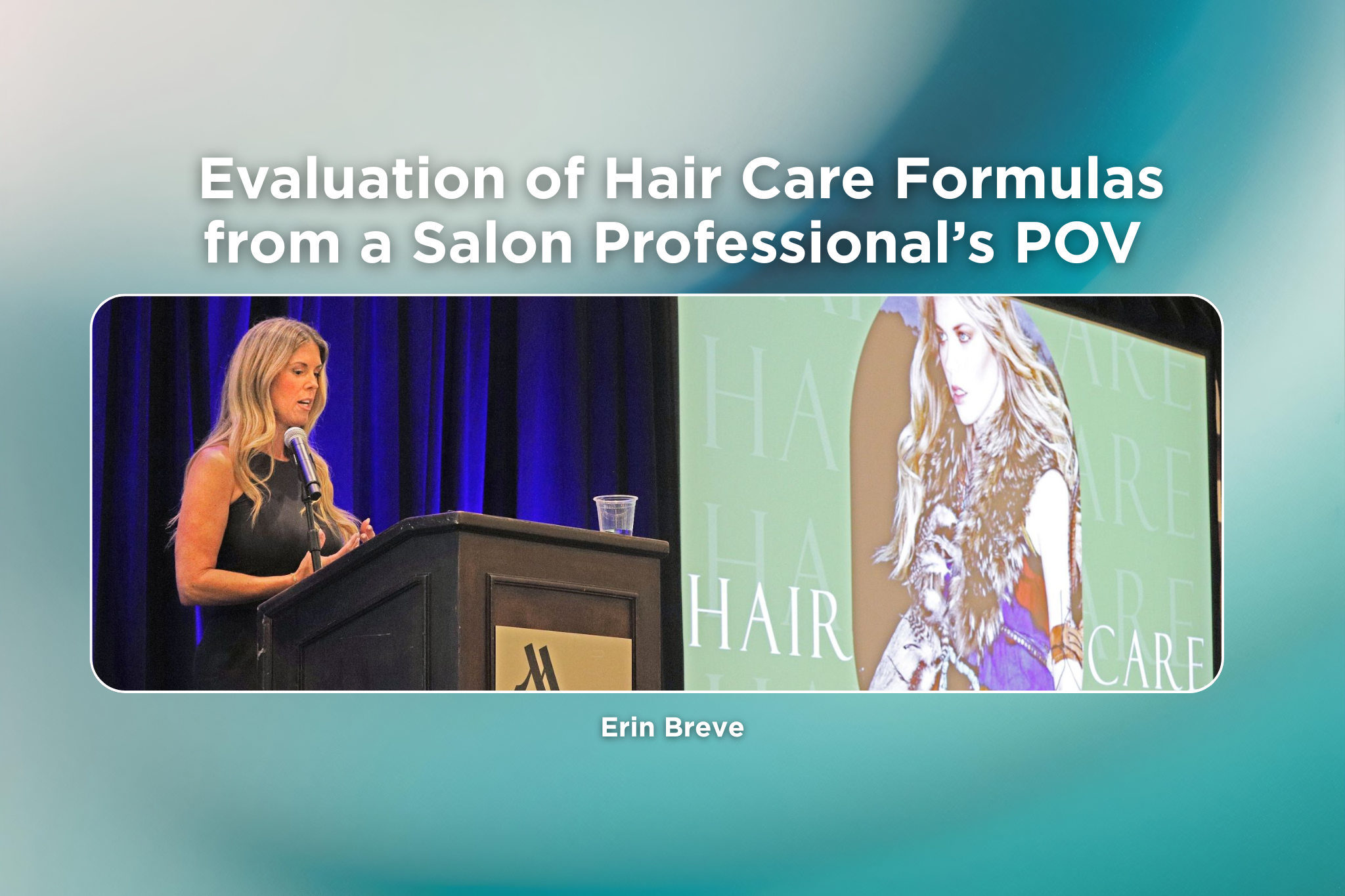A Recap from Erin Breve
When it comes to hair care, professionals and consumers often judge products differently. Stylists look for performance, sensorial markers, and longevity, while consumers tend to focus on scent, performance, and price. Bridging these two perspectives is where salon brands shine—and why they consistently outperform mass‑market products.
Let’s dive into the three biggest reasons why salon brands succeed, and how to apply these lessons in formulation, product development, and marketing.
1. Greater Formula Cost Margins
Salon brands typically allow for more generous cost margins, which directly impacts formula quality. Instead of cutting corners, they can afford higher‑quality ingredients, more effective actives, and multiple rounds of in‑house testing.
Key takeaways for developers
- Review ingredient lists (ILs): Understand why a formula uses a certain material at a specific level.
- Experiment with benchmarks: Create side‑by‑side formulas with and without key materials to evaluate their impact on performance and sensorial markers.
- Leverage salon products for inspiration: Use benchmark products to see how strategic ingredient investments translate into better results.
2. Customization Through Hair Type Understanding
Not all hair is created equal—and salon brands know this. They don’t market a “one‑size‑fits‑all” solution. Instead, they address specific needs across hair types, from fine and straight to coily and textured.
Practical steps for customization
- Know your hair types: Use established systems like Andre Walker or Mizani to classify hair accurately.
- Formulate intentionally: Fine hair often thrives with lightweight emulsions, while curls and coils benefit from heavier creams, oils, and conditioning systems.
- Test inclusively: Real‑world results across diverse hair textures ensure credibility and consumer trust.
3. Proper Evaluation and Testing
The biggest differentiator of salon brands is rigorous testing. They don’t just evaluate a formula on skin or in a lab—they use real hair, real conditions, and professional feedback.
Best practices for evaluation
- Train your touch and brain: Assess viscosity, slip, absorption, and after‑feel both in the hand and in hair.
- Test on multiple hair states: Evaluate on wet, dry, treated, and untreated hair.
- Use proper tools: Doll heads, tresses, and in vivo studies provide more accurate insights.
- Repeat the process: Rinse, reformulate, and test again until performance matches claims.
Neglecting these steps leads to common pitfalls: improper evaluation, lack of inclusivity, and vague “all hair types” marketing—mistakes that quickly erode consumer trust.
Final Thoughts
Salon brands set the standard because they:
- Invest in higher‑quality formulas with more flexible margins.
- Tailor their products to specific hair types rather than broad generalizations.
- Rigorously evaluate performance using real‑world testing and professional expertise.
For formulators and marketers, the lesson is clear: prioritize quality, specificity, and proper testing. By doing so, brands can move beyond generic solutions and deliver products that both stylists and consumers will champion.






